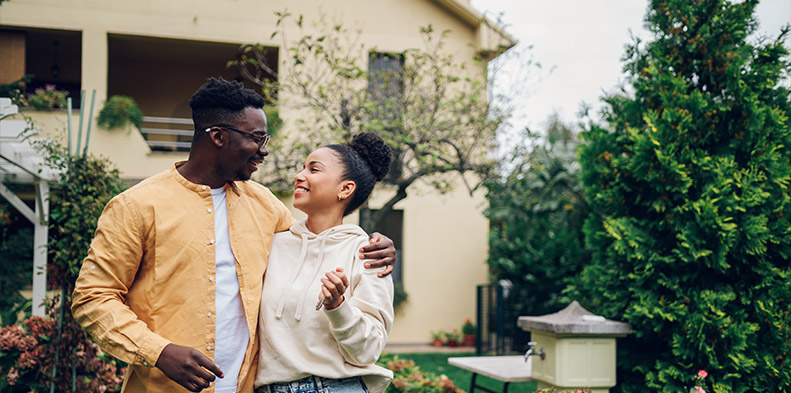
The Tax-Free First Home Savings Account: A new registered account for prospective homebuyers
Buying a home can be daunting at any age, but after years of massive upswings in house and condominium prices, many first-time homeowners may wonder if they’ll ever be able to afford their own place.
Younger Canadians, particularly millennials, are finding it harder to enter the housing market. According to Statistics Canada, home ownership for those aged 30 to 34 fell to 52.3% in 2021 from 59.2% a decade earlier, while those between the ages of 35 and 39 saw the home ownership rates slip to 62.5% from 67.1% in 2011. By comparison, the national home ownership rate fell by 2.5 percentage points, to 66.5%, over the same period.1
Today, building a meaningful down payment has become even more important to first-time home buyers. To make it easier to build that down payment, the federal government has created a new type of registered account to help new housing market entrants save for a down payment: the Tax-Free First Home Savings Account (FHSA).
Hope for first-time homebuyers
Canadians aged 18 (or the age of majority in their province/territory) to 71 who do not own a home and have not owned a home in the past four calendar years can contribute up to $8,000 per year to an FHSA to a maximum of $40,000 over the lifetime of the account (up to 15 years).
The FHSA combines elements of both the Registered Retirement Savings Plan (RRSP) and the Tax-Free Savings Account (TFSA). Similar to RRSPs and TFSAs, you can carry forward unused contribution room from past years, although this is limited to $8,000 (cumulative) with the FHSA. FHSA contributions count in the calendar year in which they are made, like a TFSA. In other words, you need to pay into the account by December 31 to get a current year deduction. It should be noted that contribution room accumulates slightly differently from TFSAs and RRSPs. With the FHSA, contribution room starts accumulating from the date you open the account, not when you turn 18 (as with the TFSA) or when you start earning an income (as with the RRSP).
When it comes to contributions, the FHSA works like an RRSP, in that they are tax deductible. That means any amount you add to the account gets taken off your taxable income that year, reducing your income taxes payable. Contributions do not need to be deducted in the year the contribution is made and can be carried forward indefinitely. If you’re short of funds, you can transfer money from an RRSP tax-free, but that wouldn’t provide a deduction, nor would it reinstate RRSP contribution room.
When it comes to withdrawals, the FHSA works like a TFSA, in that money withdrawn from an FHSA for the purpose of buying a first home is completely tax-free. For this to work, you must be a first-time home buyer at the time the withdrawal is made and money has to go toward a property located in Canada.
You can make tax-free withdrawals from your RRSP through the Home Buyers’ Plan (HBP), but with the FHSA, unlike the HBP, you never have to repay the amount withdrawn over the following years. It is possible to use both the FHSA and HBP on the same home purchase.
Grow your down payment
As with other registered accounts, you can hold various kinds of investments in an FHSA, including mutual funds, exchange-traded funds (ETFs), stocks, bonds, high-interest savings accounts and guaranteed investment certificates (GICs). They will grow tax-free as long as you hold them in the account.
What you decide to put into an FHSA might be different than what you would own in an RRSP and, potentially, a TFSA. That’s because the FHSA comes with a shorter time horizon – you need to withdraw those funds within 15 years of opening the account, but most people will likely use them sooner. You should consider your time horizon when deciding which investments to hold.
Thanks to the power of compound growth, there is potential to build up a meaningful down payment over the account’s lifetime, even if you are earning more modest returns. If you earn, say, 5% per year and were to contribute equal amounts of $2,285 every year for the life of your FHSA, and max out your $8,000 contribution room in your final year, you’d have almost $58,000 in the account.
Maxing out your contributions in the first five years of opening your FHSA, however, may help you build a larger down payment. If you were to contribute $8,000 to the account per year, you would max out your contribution at $40,000 within five years. Assuming that FHSA was also earning 5%, that account would grow to almost $76,000 at the end of 15 years.
Change of plan
Many factors go into buying a home. What may feel like a priority today may not be as important down the road based on your lifestyle and goals. If you have an FHSA and you haven’t found a home by the time the 15-year holding period is up, don’t despair.
Although withdrawals from the account are subject to tax if they are used for anything other than the purchase of a first home, holders can instead transfer the funds from their FHSA to an RRSP or Registered Retirement Income Fund (RRIF) without incurring tax. Notably, this transfer will not count against your available RRSP room, which may allow you to accelerate your retirement savings if you decide not to use the proceeds of your FHSA toward a home. Just remember, if you decide to transfer the funds to an RRSP or RRIF, you must do so before the FHSA loses its status, or you risk a potentially hefty tax bill.
Buying a first home will still take work, but the FHSA will hopefully make it a little easier for Canadians to get their foot in the door. If you’re thinking about home ownership, contact a financial advisor who can answer your questions and help you set up an account.
